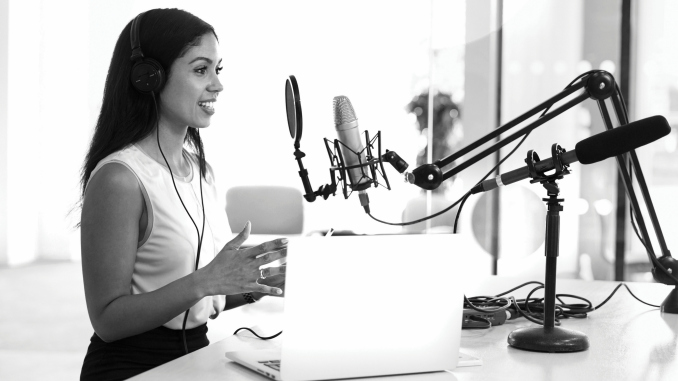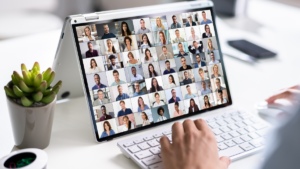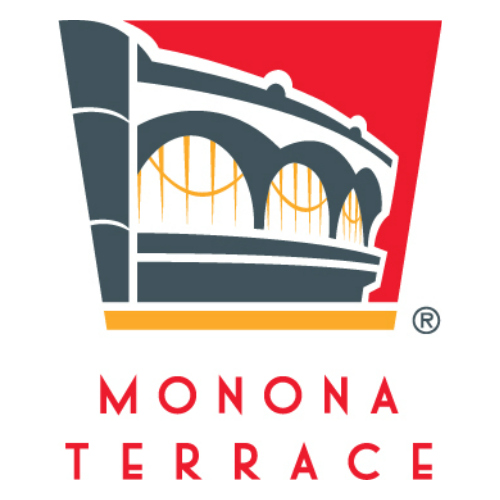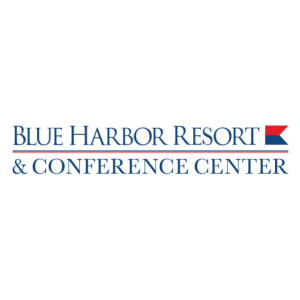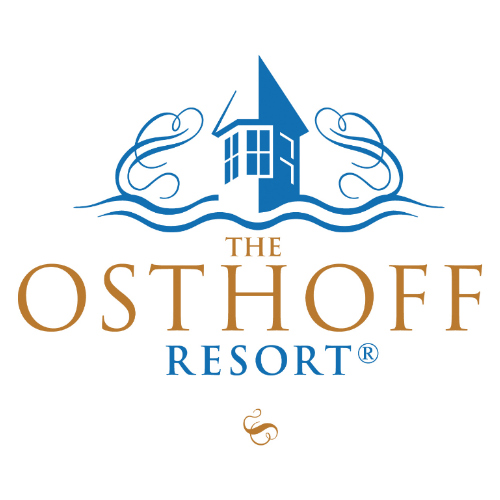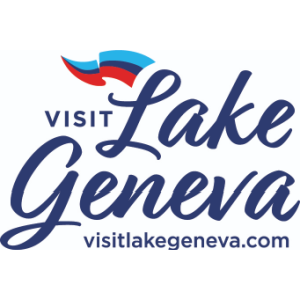Podcasts for Promotion
07/11/2019
By Greg Gerber
Allison Phillips is the CEO of Edge Marketing, a Milwaukee-based firm that helps companies produce podcasts. Recently, she scored the opportunity of a lifetime when Edge was awarded a contract to podcast the Democrat National Convention (DNC) in 2020 when it takes place in Milwaukee.
She’s planning to interview people before the event to build excitement around the convention.
“A lot of podcasts can be done by using Skype,” she says. “You can have people sitting half a world apart but record it so they sound like they’re in the same room.”
Then, her team will capture as much content as it can during the convention and distribute it far and wide.
“This way others can listen to what’s happening in Milwaukee and feel like they are part of the meeting, even though they are thousands of miles away,” she explains.
Though the DNC is a larger-scale event than what most planners work with, meeting planners are discovering podcasts are an exceptional tool for promoting events, and when they are used in this way, it doesn’t cost a lot of money to reach a lot of people.
They are not alone in their discovery. Podcasting is growing in popularity. What started as a fad back in the 1980s has become a full-blown medium for communication.
According to Podcast Insights, there are now 700,000 unique podcasts—up from 550,000 the year before. In fact, 51% of Americans have listened to at least one podcast episode, and nearly one-third of all adults have listened to a podcast in the past 30 days.
There is so much interest in podcasting today that YouTube recently announced it too was launching a separate podcasting channel.
WHAT IS A PODCAST?
The advent of broadband Internet combined with portable listening devices, like iPods and later smartphones, ushered in the ability for people to basically produce their own talk show and broadcast it to the world.
A podcast can range from a few minutes to an hour long. Typically, they are about 25 minutes, or long enough to be enjoyed during a one-way commute. Some feature a host delivering a monologue, while others feature interviews or multiple people sharing information.
They are either scheduled to be released at regular intervals, or they are set up in batches, like 20 episodes, to explore a specific topic.
The best part about podcasting is that it allows a company to disseminate a message in its own words.
Richie Burke is the founder and president of GoGeddit Marketing and Media (GGMM), a Milwaukee-based company that helps strategize, produce and market podcasts for brands including Trek Bicycle Corporation, Colliers International and Marquette University. He considers podcasting to be one of the best types of social media promotion available.
“Podcasts allow you to create content around content,” he explains. “They are an excellent branding strategy and a very affordable way of advertising.”
For example, a company can spend $200 to air a 30-second radio commercial—and up to $350 to air it during morning drive time, says Phillips. However, once the commercial airs, the message is lost unless a firm wants to pay to broadcast it again. The cost for television ads rises exponentially, but the result is the same.
But, for the same amount of money— or less—a 30-minute podcast can be prepared and released on a much larger scale and made available for people to listen to when it is convenient for them.
Another advantage to podcasting is that it is passive media, which doesn’t require a listener’s full attention. “Video requires someone to watch a screen and so does the written word,” Burke explains.
Yet, when people listen to one podcast, and like it, they have the option of going back to Episode 1 and listening to everything else the organization has to offer.
“I have clients who were spending $20,000 for television and radio ads to promote an event. After starting a podcast, they discovered they can reach a larger audience for less money and have far more accurate statistics regarding who heard the message,” says Phillips.
In fact, she notes, that with podcasts, meeting planners know how many people in Milwaukee heard the message versus people in Madison or Green Bay. “With other forms of advertising, you really don’t know how many people you’re actually reaching, let alone how many people actually heard the message,” she adds.
A GREATER REACH
When it comes to statistics, it is easy to get caught up in the numbers without realizing the true impact behind them. For example, if a podcast had 300 downloads, some people might see that as a small audience compared to the vast Internet.
However, when they close their eyes and imagine that message being presented before a room of 300 people, the audience takes on a whole different dimension. The people who downloaded the message, did so with intention and purpose, just like those who attend a meeting or event.
“Including a 10- or 15-second sponsor message at the start, middle and end of a podcast is an excellent way to help exhibitors draw attention to their displays before the show, and to promote their products long afterward.”
—Allison Phillips, CEO, Edge Marketing
Because they are relatively easy to produce and can zero in on a topic of interest to a specific audience, more marketers are embracing podcasting. Phillips underscores this simplicity by noting that one of her clients is PeyPey the Podcaster, a 10-year-old girl who provides entertainment reviews and averages 2,000 downloads an episode. “If a 10-year-old girl can have a successful podcast, we can help others create a successful podcast too,” says Phillips.
MULTIPLE PROMOTIONAL OPPORTUNITIES
Planners are discovering that podcasts can be used to promote an event before, during and after it ends, adds Burke, who notes it’s becoming an increasingly important way to disseminate meeting information.
Promoting with keynote speakers and session leaders before an event, gives organizers flexibility to release hot sound bites on social media or the event’s website to build more interest in a conference. Speakers can even distribute the content on their own channels, which expands the reach to include their own followers. Phillips, for instance, was hired to record a women’s conference this spring. She released some podcast episodes in advance of the event to help people know what to expect during it.
“Podcasting is way cheaper than spending money on advertising,” she explains. “Organizers who embrace podcasting can decrease their advertising budgets.”
Some meetings have multiple sessions running concurrently, which requires participants to choose from several options. That means presenters may be speaking to just a fraction of the overall audience, Burke explains. Here, it makes sense to record the presentation for distribution later.
“If the message is recorded and distributed as a podcast after the event, and hundreds of people can listen to it over the next year, now you’ve made the speaker look like a hero,” he says. “Plus, if you give the recording to the speaker as well, it becomes free content for their blog or website which, in turn, builds awareness of future conferences.”
He reports recording on-site is easy. Most meetings, especially big conferences, already use a sound system to control microphone volume. Adding a recorder to the sound board is often as simple as plugging in a cable. That allows everything said on the stage to be recorded, and then chopped into smaller segments to be consumed over time, Burke explains.
Once recorded, Phillips adds, “The content can be shared over and over so more people can be reached using larger, more relevant messages for less money.”
Likewise, podcasting is a nice way to reward speakers, too, says Burke.
“It takes a lot of time to put together a quality presentation, and a lot of money and time to travel to the event,” he says. “By sharing the presentation with others after the meeting, you provide a great perk by helping expand the audience for the speaker. It also gives people who didn’t attend this year’s conference a reason to make participating in the next event a priority.”
CONTENT LIVES ON
One of the biggest advantages to podcasting is that it allows the content of a meeting to live on long after attendees have departed.
“Companies bring in speakers who deliver excellent information, but only to the people in the room,” says Burke. “While there might be a few dozen or few hundred people at the event itself, the presentation can be turned into a podcast and made available to thousands of others.”
GGMM is planning to record a tremendous amount of material during a festival this summer, including panel discussions, and then release the information as a 10-episode Netflix-style podcast.
“Meetings are no longer just a one- or two-day event,” he explains. “With podcasting, they offer infinite possibilities.
“Good marketing requires event planners to invest time and money reaching people wherever they may be,” he continues. “Podcasting adds value to the promotional process by allowing the message to stand out in a very cluttered marketplace.”
Noting that there are 500 million blogs, and just 700,000 podcasts, Burke says it’s much easier to get a message heard when people can consume it passively on their way to work, while doing chores or exercising, or sitting in an airplane.
PODCASTING REQUIRE?
To do it right, a podcaster would need a good broad- cast-quality microphone—or more if people will be inter- viewed live—plus a sound mixer, headphones, a digital recorder and some software to edit the recording. A professional set up would cost about $1,600 to $2,500.
Or, people can hire a company like Edge or GGMM to do the work for them. The firms can bring their podcast equipment to an office and hammer out six episodes in a few hours, edit the content and release the recordings over the next month and a half.
“Where else can you get six weeks of quality social media content for four hours of work?” Phillips asks. “Podcasting is absolutely the wave of the future.”
ELIMINATING ALL COST
What many meeting planners are discovering is that they can sell advertising on podcast episodes to cover the costs of producing them.
“Look at the amount of money companies pay for an ad in a show directory that can be seen only when they arrive on site, and is often discarded when the event is over,” says Phillips.
“Including a 10- or 15-second sponsor message at the start, middle and end of a podcast is an excellent way to help exhibitors draw attention to their displays before the show, and to promote their products long afterward as the podcasts continue to live on,” she adds.
Burke says that companies enjoy a huge advantage over new podcasters because they already have established audiences.
“When I started a podcast, my audience consisted of me, my mom and a few friends,” says Burke. “Corporations have a customer base and associations have members—and both likely have large email lists that create an established foundation for episode No. 1. The brand can only grow from there.”
When people consume podcasts, Burke says most listeners take in 85% of the audio content, compared to just 4% for similar video.
“There’s a very good chance that content released as a podcast will be consumed in its entirety because people can listen even when they are on the run, literally,” he adds.
ADDING LONG-TERM VALUE
The bottom line is that podcasting adds value to meeting attendees who might not be able to attend every session, to exhibitors who are trying to entice people to their displays and to sponsors who would appreciate more recognition, Burke explains.
“Nothing beats face-to-face contact and the networking that conferences provide,” says Burke. “In person events are great, but they aren’t scalable, and the content doesn’t live on when the meeting ends.”
Hosting rich content like podcast episodes on an association or company website offers the unique, current content that search engines crave. That alone raises the stature of the meeting and its participants.
Phillips agrees, “Conventions are for networking, while learning is for later,” she adds.
Her team recorded a beer convention six months ago. Many people who couldn’t attend wound up listening to sessions afterward and have already signed up to attend the event next year, she explains.

